Soccer drills
- Pass the ball into the boxes
- Score as many points as possible
- The opposing team's ball may be moved to another box by passing against it with the ball.
- In the youngest groups the distance from the green pawn to the scoring boxes is 5 meters, in the oldest groups it is 8 meters.
- The scoring boxes are 1 meter long and 3 meters wide.
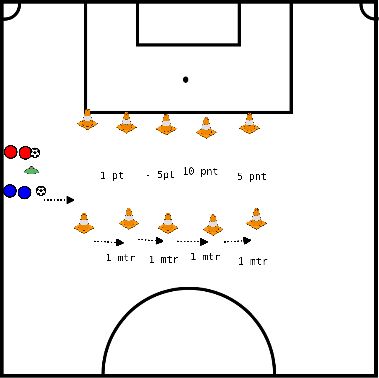
- 2 players face each other
- One is the sender the other the receiver
- The receiver receives and rebounds
- The receiver dribbles sideways several meters without the ball
- The receiver receives the ball again
- The receiver dribbles back without the ball
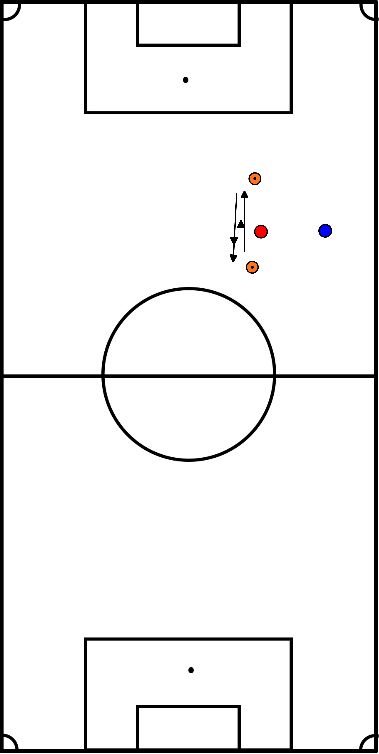
- Players shoot pointedly into the big goal
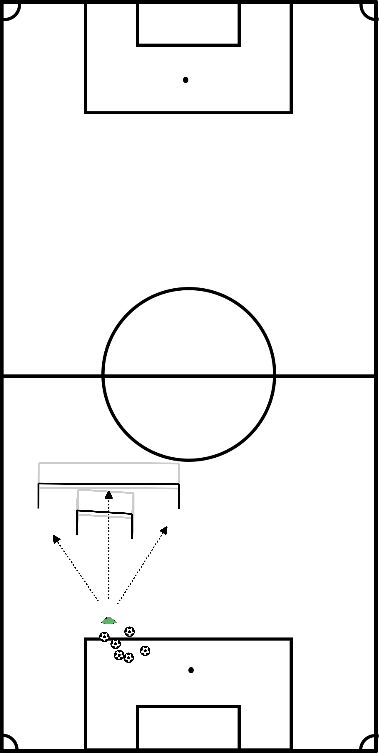
- Standing on one leg with a final goal of 10 seconds sustained with both legs.
- Attention: do not sink into the hip on the standing leg, keep knee slightly bent.
- If not successful, have knee extended or have children find light support from each other.
- Duration: +- 3 minutes.
On signal they start the exercise.
- As fast as possible over the hurdles, around the cone and duel 1v1. Trainer kicks ball into the field, sometimes with advantage or not.
- Maximum of 20 seconds per duel.
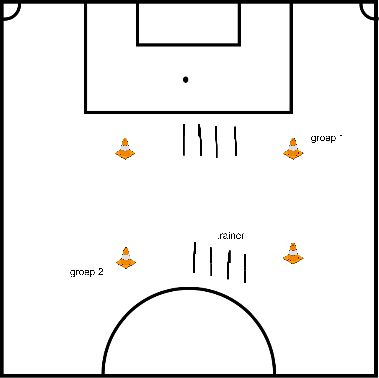
- The team stands ready in 2 groups behind a pawn.
- They are given an exercise by the trainer and do it 1x. On the way back they run back and close behind.
- 2 players run at the same time. The next one leaves when the pair has passed the first hat.
- Exercises:
1. Jogging
2. Knee-up
3. Heel-to-belly
4. Sideways left
5. Sideways right
6. Arms swing front
7. Arms swing back
8. Jump over caps with 2 feet at the same time
9. Sprint to cap and back
10. Shoulder thrust and sprint
- The players form 3 groups
- 2 players stand by 1 pilon and the other opposite.
- The first of the two players receives the balls and plays the player across from her right in the feet. Then this one sprints to the player and stands by the pilon.
- The other takes the ball and plays the ball to the one opposite.
- This repeats itself.
- Because they work in 3 pairs, they are nice and active.
- Variation:
- There is dribbling with the ball at the foot.
- 2 teams are made.
- In the middle is a pylon (or several).
- Teams transfer the ball to other side first by example:
- Throwing over.
- Kick over.
- Dropkick.
- Heading.
- Ball must be placed on the opposite side of the pile.
- After this the next player can do it.
- When the last ball is returned, the pawn in the middle can be kicked over.
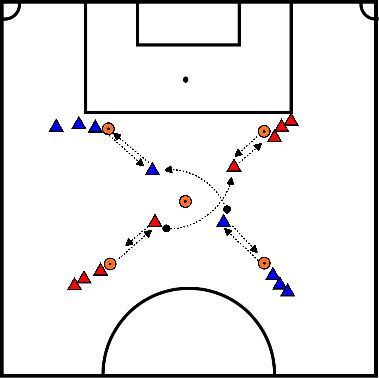
- Two teams are made.
- In the middle stands a pylon (or several).
- Teams first bring the ball over to the other side:
- Throwing over.
- Kick over.
- Dropkick.
- Heading.
- The ball must be placed on the opposite side of the pitch, and the person passing on the ball must also sprint back.
- After this, the next team can play.
- When the last ball is returned, the pawn in the middle can be kicked over.
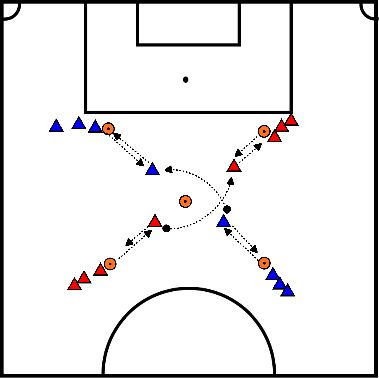
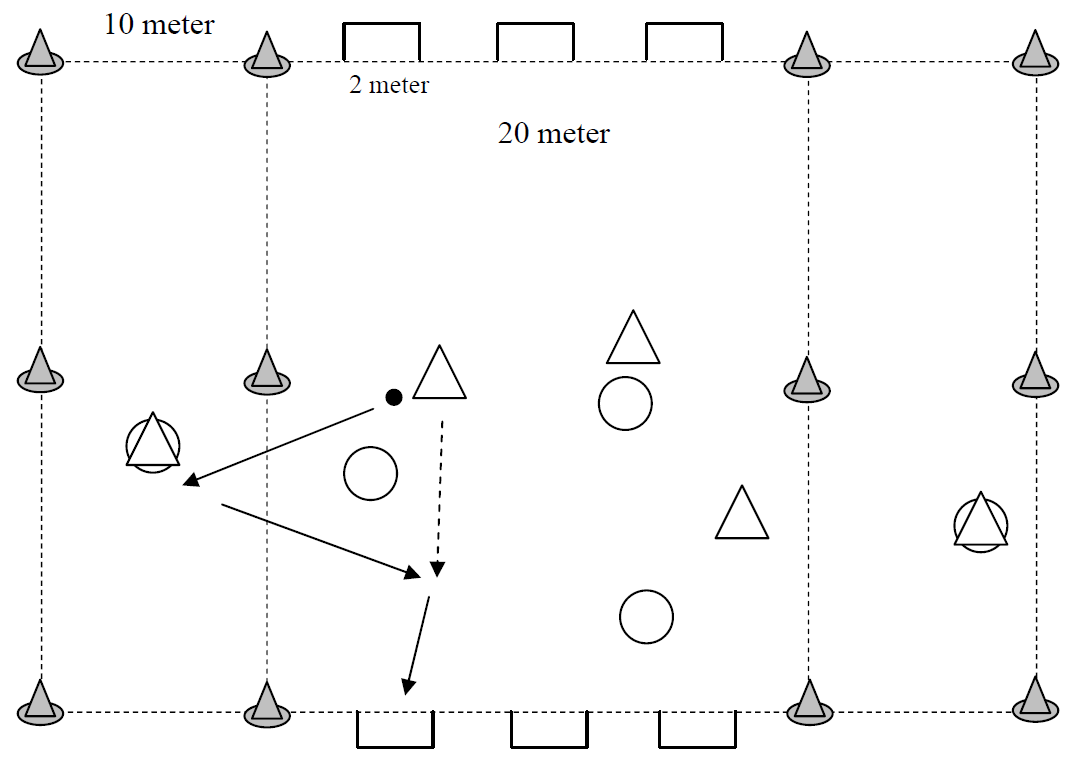
Organisation:
The game is played 3:3 with extra players on the sides, the outfield players. These 2 players are with the ball-carrying team.
Encourage the offside players to play quickly.
The offside players can also dribble with the ball first
After a few minutes, they must either play directly or pass and play
If this is going well, you can also let the two offside players play directly.
The players on the outside are not allowed to score
After 10 minutes or a little less, change the outfielders.
Remarks:
After the offside players have to accept and play, the game runs better. There is
more football in the gamenow
, while in the beginning the outfielders were running a lot with the ball
.
Points of attention:
Try to play directly.
Make sure they use the sides and do not always go for their own success.
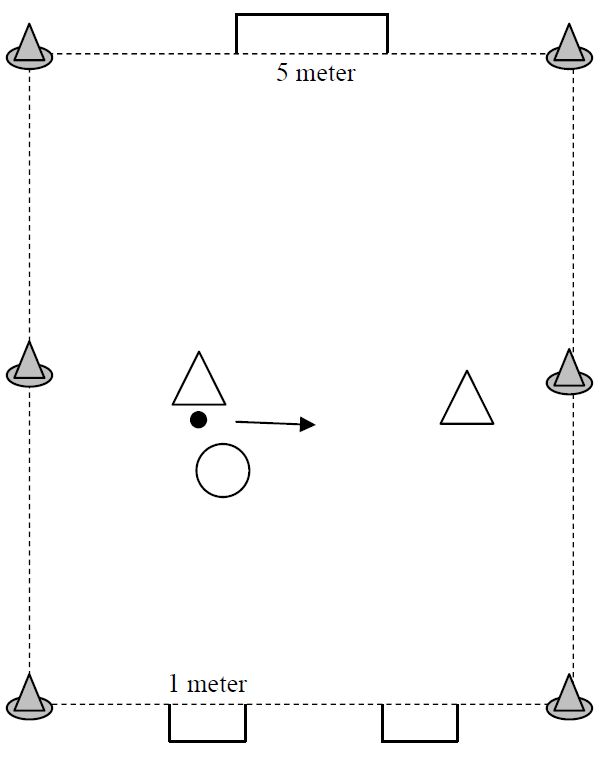
Organization:
The game is played 2 against 1. If there are 2 players left they play 1:1 on a smaller field.
The pair tries to score on the 2 little goals.
After about 8 minutes the players are changed.
If the 2 team has it too easy, you can move the 2 goals closer together.
Remarks:
Because of the many 1:1 duels you can soon see if they are doing well or not so well. Don't
give them instructionsin the first
game. Give them the chance to improve themselves.
Points of attention:
Prevent the opponent from shooting at goal.
Position yourself in such a way that it is difficult for your opponent to pass to his/her team-mate
Organisation:
On 2 fields 3:3, 4:4 or 4:3 is played.
You can score with a dribble through one of the two little goals.
First try to encourage them to make passing moves.
If that is going well, you can also try to make sure they make the right choice between passing and playing over.
After about 10 minutes a different opponent.
Remarks:
When changing opponents, you can indicate which nice passing actions you have seen.
Points of attention:
Do not use the passing move too far or too close to the opponent.
The body must move with the passing move in order for it to be successful.







